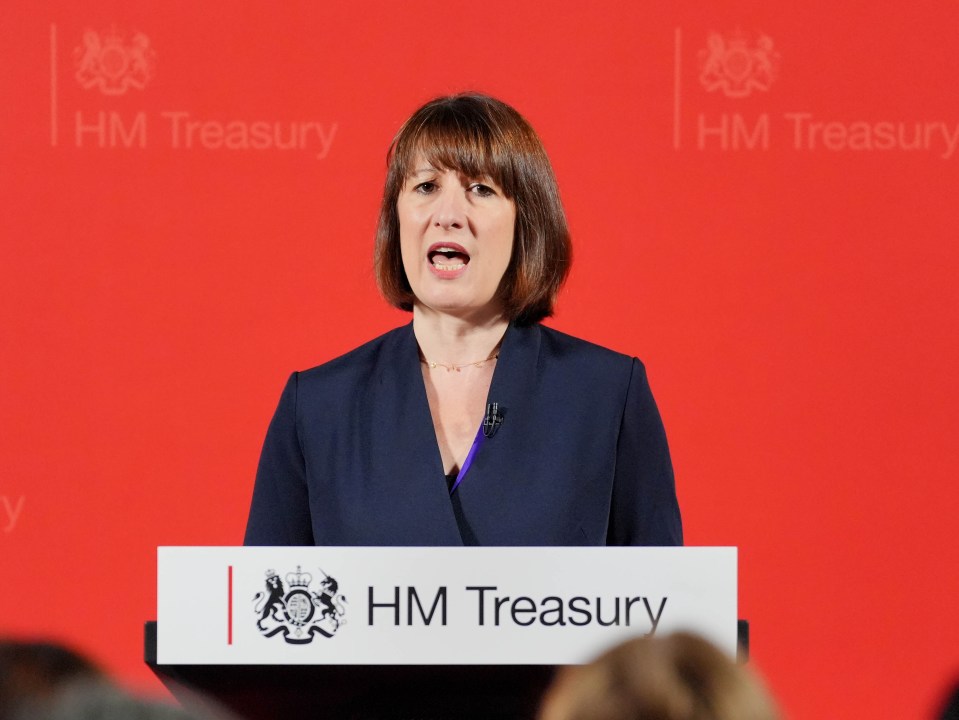
THE Government has set a target of 1.5million homes over the next five years – and using less foreign labour and more UK brickies, plumbers and electricians is central to its plan.
Chancellor Rachel Reeves’ intervention came last week, after a Construction Industry Training Board estimated that 251,000 extra workers will be needed by 2028.
Industry experts calculate that 45,000 will have to start apprenticeships every year, but just 24,000 did so in 2023.
Ian Hodgkinson, who has 40 years in the trade and is project manager on BBC’s DIY SOS, says the target is unrealistic.
RACHEL REEVES and this new government need a reality check.
They are creating a situation where demand will outstrip supply, driving house prices up yet again.
Read More on Opinion
The UK needs a housing minister who truly understands construction and takes the job seriously.
This role should not be a revolving door. It requires stability and expertise.
The UK needs to be ready to build and be prepared, with steel-toe cap boots on.
The Chancellor’s plan is ambitious to the point of being nearly impossible, raising a crucial question: Who will actually build these houses?
Most read in The Sun
The UK has never achieved such a high construction rate, and the reality is we simply don’t have the resources.
With only about 42,000 bricklayers nationwide, the idea of constructing 300,000 homes annually seems far-fetched.
We would need 33,000 more bricklayers alone to meet government targets.
But fewer than that actually started last year. And even when they do, they need training.
A bricklayer requires around three years of apprenticeship to be fully prepared to build a house.
Anything less, and we risk poor workmanship and a flood of unqualified “cowboys”.
New house builders have already been criticised for shoddy workmanship.
Relying on immigrant workers isn’t a straightforward solution either, as they would need training to meet UK standards.
Relying on immigrant workers isn’t a straightforward solution either, as they would need training to meet UK standards
Many of the major contractors and the “top five” housebuilders do not take on nearly as many apprentices as they should.
They rely heavily on sub-contracted labour, passing the responsibility of training on to smaller businesses and families in the building trade who need tax incentives to help ease their financial burden when training apprentices.
So, with fewer than 40,000 plasterers and about 240,000 joiners in the UK, the number of tradespeople available is far too low to meet this demand.
Right now, achieving the target is highly unlikely.
The new Chancellor’s plans to replace the broken Apprenticeship Levy with a new Growth and Skills Levy underscores the pressing need for a more effective and inclusive approach to workforce development, particularly in the building sector.
The current Apprenticeship Levy has indeed faced significant criticism for its shortcomings, especially in terms of accessibility and flexibility, which have disproportionately affected smaller businesses.
Right now, achieving the target is highly unlikely
The Skills Levy could offer a more comprehensive and adaptable approach to workforce development, better aligning training investments with the diverse and evolving needs of builders.
But implementing a new levy system will take time.
Without immediate action, the skills gap may continue to widen, effectively kicking the can down the road and delaying the necessary progress.
The Apprenticeship Levy appears to have been designed with larger businesses in mind, often functioning as an extra tax rather than a true incentive for workforce development.
The access to funding for smaller companies — those that actually take on apprentices — has been inadequate.
A Growth and Skills Levy must be structured to ensure smaller builders, who are crucial to the industry, receive the support they need.
The challenges faced by small and medium-sized enterprises under the current Apprenticeship Levy are significant.
Small builders, who often take on apprentices, struggle with the administrative and financial burdens imposed by the system.
Small builders, who often take on apprentices, struggle with the administrative and financial burdens imposed by the system
A revised levy should include provisions tailored to support smaller businesses, such as simplified processes, reduced thresholds, or the ability to pool resources for collective training initiatives.
This support is crucial for ensuring smaller builders can continue to contribute to the industry’s workforce development.
A Growth and Skills Levy should offer greater flexibility, enabling builders to allocate funds towards training that best meets their needs, whether through apprenticeships, short courses or other training models.
This would allow companies to adapt more readily to the specific demands of their workforce and the broader industry.
I hope there will be a shift in the school curriculum to encourage more young people to enter the building trade.
Read More on The US Sun
There needs to be a change in emphasis, and a shift in perception, to make the building trade an attractive career choice.
Only then can we hope to build the homes the UK so desperately needs.











